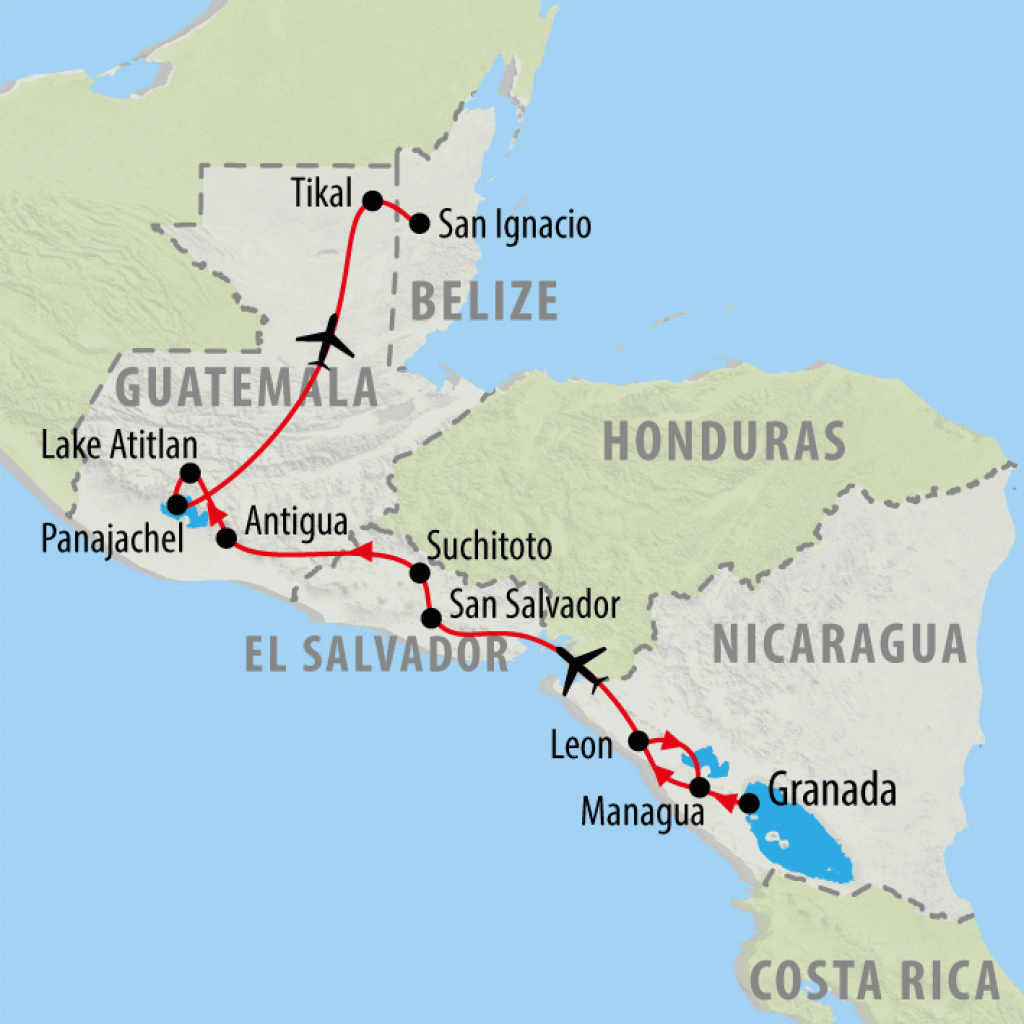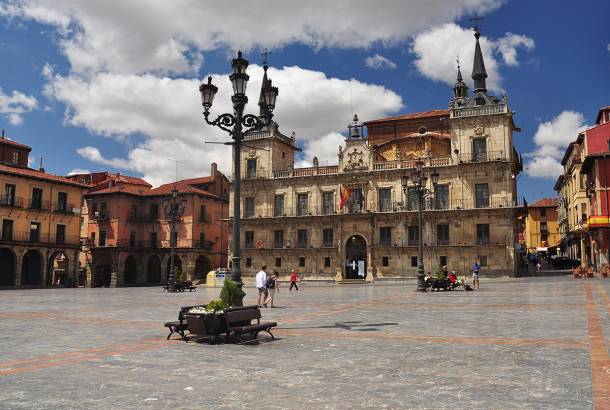
Leon
Located along the Chiquito River, Leon is the second largest city in Nicaragua. With a university founded in 1813, the city is considered the intellectual centre of the nation. It is home to some fine examples of Spanish colonial architecture, most importantly, the UNESCO World Heritage listed Cathedral of Assumption. The cathedral was built between 1706 and 1740 and is one of the city’s best known sites. And the cathedral is not alone as there are more churches and cathedrals in Leon than anywhere else in Nicaragua. The original city of Leon was established in 1524, east of where present day Leon now stands. An eruption of the Momotombo volcano left the city with extensive damage and its inhabitants abandoned the city in 1610. They moved to Leon’s present location, next to the indigenous town of Subtiava. The ruins of the old city, known as Leon Viejo, contain a cellar where the remains of Leon’s founder can be found. This archaeological site was also declared a World Heritage site. Besides the historical interest and value, the site also affords stunning views of Lake Managua and Momotombo volcano.
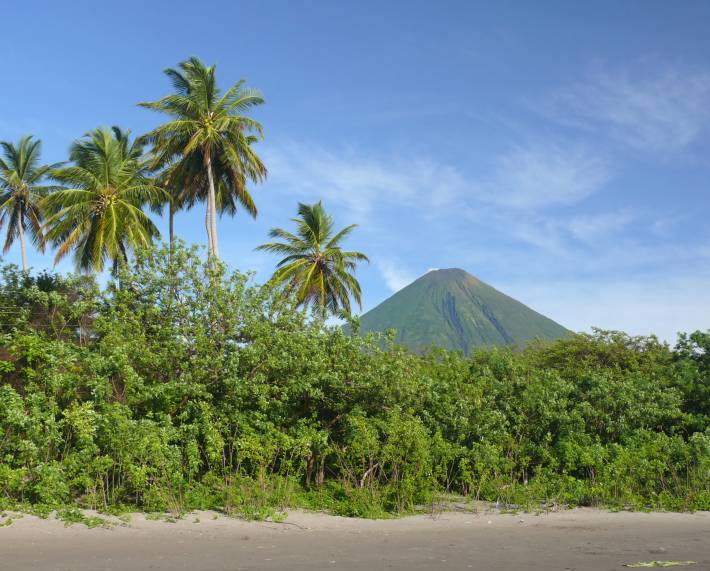
Ometepe Island
Ometepe Island is an island formed by two volcanoes – Concepcion and Maderas. Rising from Lake Nicaragua, it is the largest island on the lake. Ometepe Island forms an hourglass shape with a strip of land joining the two volcanoes. The perfectly formed volcano cone of Concepcion, the northwest half of the island, reaches 1,610m in altitude and is considered active. The southeast half of the island, Volcan Maderas, has a crater lake supporting a diverse rainforest environment. Much of this half of the island is a nature reserve with fertile land a welcomed by-product of the volcanic ash. The island once served as an Indian burial ground, and the volcanoes play an important part in the myths and legends of the island’s people. It is thought that the Ometepe has been inhabited since 300 BC and rock engravings, known as petroglyphs, have been found in archaeological sites all over the island on over 1,400 boulders.
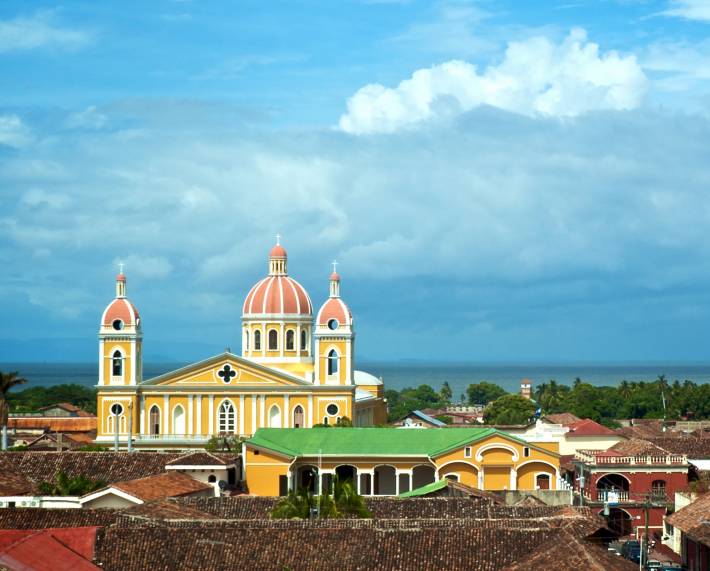
Granada
Throughout its history, the city of Granada has been invaded by English, Dutch and French pirates attempting to take control of the country and its rich colonial heritage is evident in its layout and architecture. Built around the main square, the city was originally constructed as a showcase city but soon gained importance as a trading centre. Granada is scenically located along the coast of Lake Nicaragua and during the colonial period, the city maintained a flourishing level of commerce with ports on the Atlantic Ocean as the lake connects with the Caribbean Sea. Lake Nicaragua is also notable for the fact that it is the only freshwater lake in the world that is home to species of shark. In the lake are also a number of beautiful little islands. The beauty of the lake combined with the regal splendour of the city itself makes Granada a great place to explore by foot and enjoy a few leisurely days.
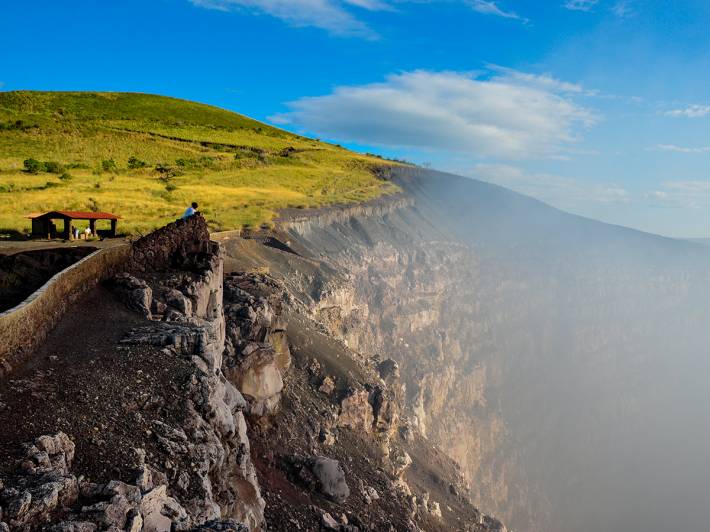
Masaya Volcan National Park
The Masaya National Park is home to the Masaya volcano, considered to be the most fascinating natural phenomena in Nicaragua. The national park was one of the first in the country, established in 1979. 20km worth of scenic roads and trails enable visitors to get up up close to the two impressive volcanoes and five formidable craters, continuously emitting smoke and sulphur gases. The Masaya volcano is known to the indigenous Chorotega tribe as Popogatepe – “mountain that burns”. During the pre-Columbian age, the indigenous people of the region believed that the volcano’s eruptions were a sign of anger from the Gods. In order to appease the Gods and stop the eruptions, human sacrifices were offered to the volcano. Later in history, the volcano was also feared by the Spanish conquerors who baptised it ‘La Boca del Infierno’ – the mouth of hell. In order to exorcise the devil from the volcano, they planted a cross on the crater of the lip during the 16th century. Today, the national park is home to different types of vegetation and animals, including coyotes, skunks, racoons, possums, iguanas and monkeys. The Tzinaconostoc Cave is where hundreds of bats live and underground tunnels formed by lava streams offer visitors a unique look at rock formations.
See Also
For more information to help plan your visit to Nicaragua check out our handy Travel Guide resources below:
Best Time to Visit - climate, seasons and festivals in Nicaragua
Top Travel Tips - vaccinations, tipping, currency and more





